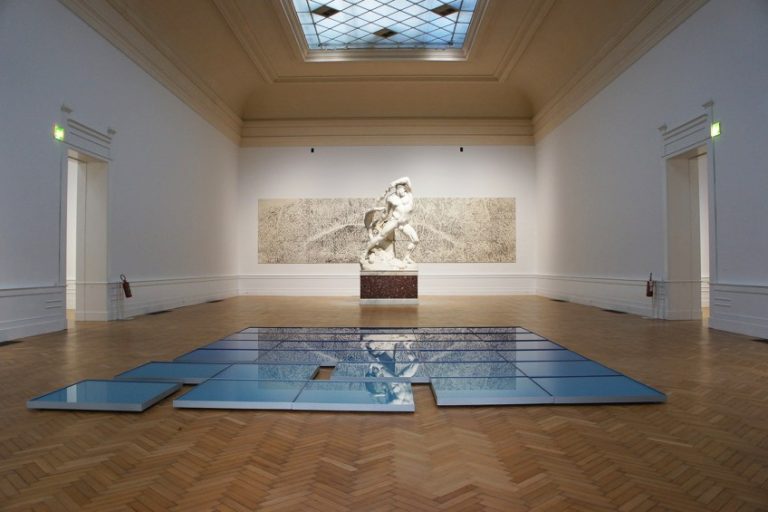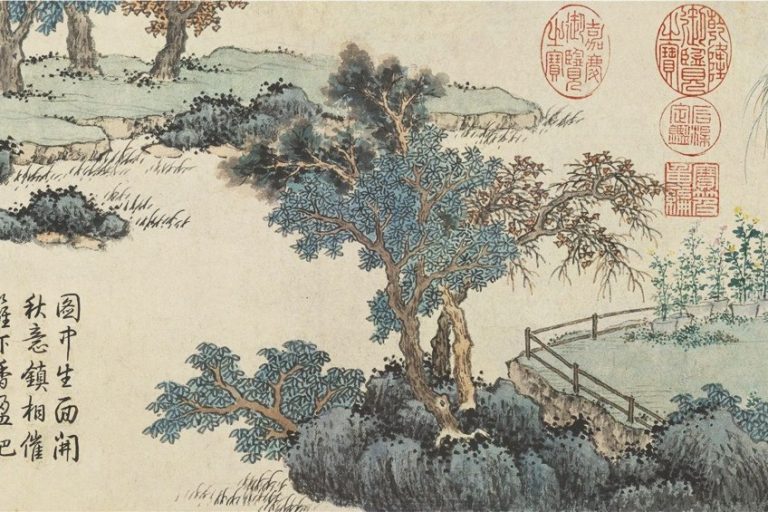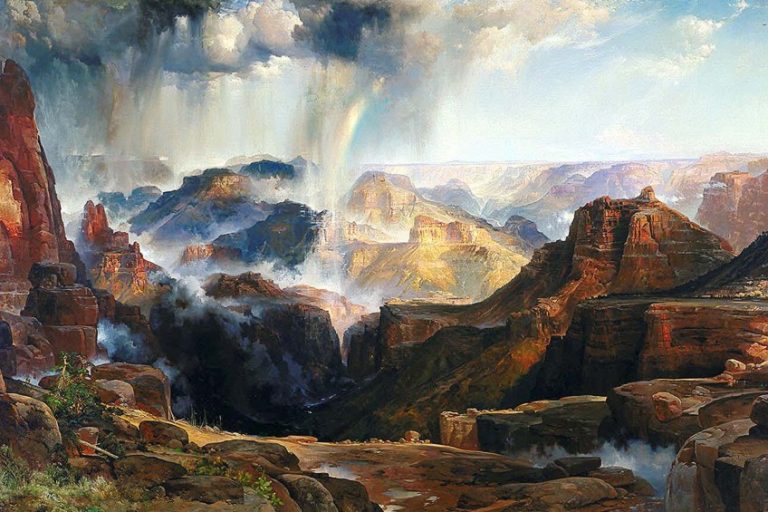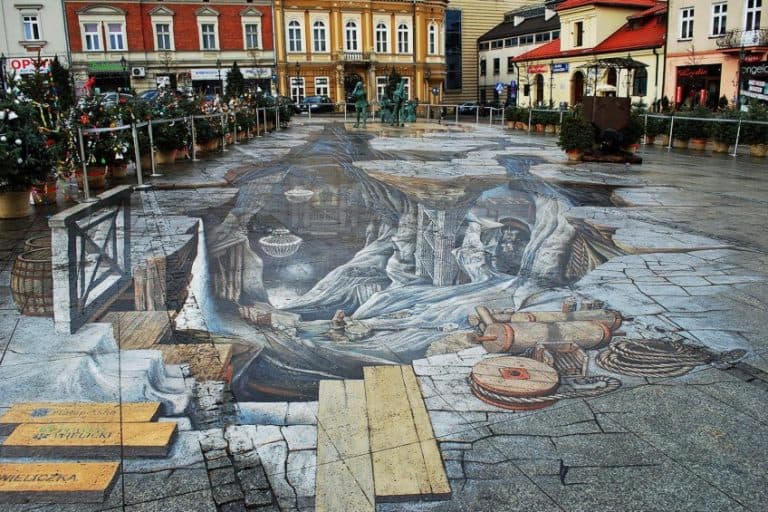French Art – A Deep Dive into the Art and Culture of France
French art is highly regarded around the world. Art in France has been renowned since the Middle Ages when it was responsible for creating some of the most iconic examples of Romanesque and Gothic artworks. French art history stretches back through the centuries, with famous examples appearing from the 1400s onwards. Below, we will discover more about French art culture and find out what makes this country’s art so vital to the rest of the world!
French Art History Through the Ages
French art history can be traced back to Cave art, with wall paintings and carved relief sculptures found throughout many of its caves. The Lascaux cave was rediscovered in 1940, during the Nazi occupation of France. The Chauvet cave, which dates back to 30,000 BCE and was rediscovered in 1994 by three cave explorers, is home to the earliest French cave artworks. The Venus of Laussel is one of art history’s oldest instances of a carved relief sculpture and dates from around 25,000 BCE.

The French Art Renaissance
While the Renaissance era began in Italy, the movement swiftly expanded across Northern and Western Europe, with a strong focus on the application of mathematics in regard to perspective and the concept of humanism. The French Renaissance peaked between the late 15th century and the end of the next century. Its development may be split into a number of phases, beginning with early works whose aesthetics still blended Gothic aspects with new French design principles, such as those made by the painter Jean Fouquet, and progressing to the last expressions of Mannerism near the end of the 16th century.
Portraiture, in addition to religious works, became an increasingly prominent topic in French Renaissance painting.
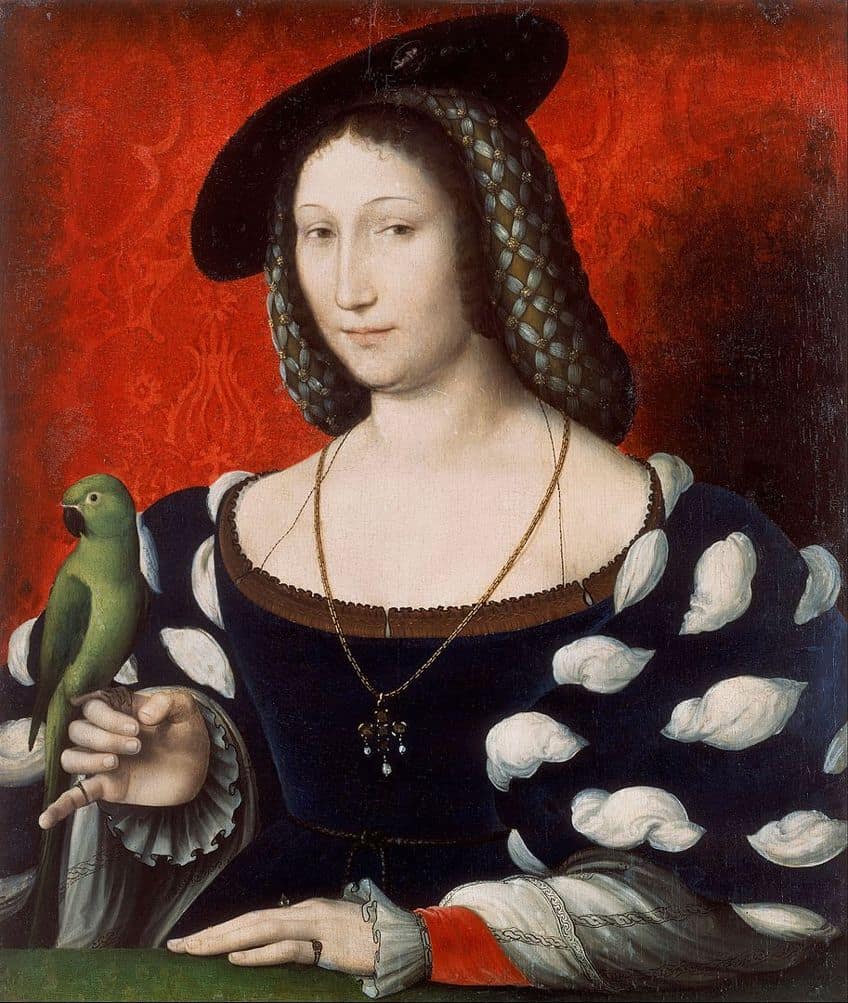
The French artworks capturing military leaders and royalty may have been the area of this type in which France finest excelled. France’s royalty, as well as their mistresses, were topics for artists, and the Royal courts could claim of having some of the finest artists of their day as members. The court artist Jean Clouet, widely recognized for his depictions of King François I, was the finest French Renaissance master in this genre.
The Impact of Italian Art on France
King François was a progressive and intellectual ruler who invited the famous artist Leonardo da Vinci to come to France to work. Da Vinci accepted the King’s offer and spent the final few years of his life at Amboise, Loire Valley, in a small palace that belonged to the king. Da Vinci brought a number of drawings and paintings with him, most of which remained in France and are now housed at the Louvre Museum.
Da Vinci and King François established strong ties, and while he died before construction started in earnest, it is believed that the famed double-helix staircase of Chateau de Chambord was planned by the great Renaissance genius.

New Italian styles eventually started to have an impact on French art. The artists of the country combined these foreign concepts with their own local traditions to produce a distinctly French Renaissance style, notably in building and decorative arts. Jean Fouquet was a prominent 15th-century artist who was regarded as a master in manuscript illuminating and panel painting as well as being regarded as the inventor of portrait miniatures. He is considered to be the first French artist to acquire first-hand knowledge of Italy’s early Renaissance. His time in Italy impacted him so much that he began to merge Italian flair into his own work, resulting in the development of a distinct style unique to Fouquet.
Important French Renaissance Artists
Francois Clouet was Jean Clouet’s son, and following his father’s death, he assumed his father’s position in King Francis I’s court. His artwork is known for its meticulous detailing, yet his coloring skills were not regarded as on the same level as his drawings. Enguerrand Quarton was a French painter and illuminator. He was born in northern France and migrated to the provinces, where he worked alongside Barthelemy d’Eyck and Nicolas Froment. Germain Pilon was a French Renaissance sculptor who grew up in Paris and studied under his father, Antione Pilon.
Pilon became a specialist in bronze, marble, terra cotta, and wood, and he began creating models for Parisian goldsmiths in 1555.
The Rococo Period in French Art Culture
In 1715, following King Louis XIV’s death, the French aristocracy returned to their Parisian mansions from the court of Versailles. They avoided the excesses of the Baroque style of the Palace in favor of more elegant decor and furnishings in their residences. Pastel tones and smooth rounded outlines were commonplace, and paintings often represented carefree love scenes, natural views, and youthful romantic encounters. Instead of being surrounded by rich colors and precious metals, the French nobility now lived in more intimate apartments adorned with boiserie, stucco adornments, and mirrored glass. This new style was distinguished by its beautiful curves, asymmetry, and elegance, as well as the charming new paintings of courtly love and daily life that adorned the walls of these places.

Important Rococo Artists and Works
The academy artist Jean-Antoine Watteau was an influential proponent of the Rococo style. He rose to prominence as an artist who created scenes depicting popular Italian theater characters, but he is most recognized as the creator of the Fête Galante style of painting.
These were usually little cabinet paintings of romantic scenes set in lush countryside settings.

Grivet ranked François Boucher alongside Watteau, stating that Boucher’s “themes of sensuality and pleasure” were occasionally tinted “with an element of licentiousness or eroticism”, and that it was Boucher who established himself as the master of female nudes. The works of Rococo art were often commissioned by affluent patrons, many of whom had come from aristocratic or royal families. In fact, Progress of Love (1773) by Jean-Honoré Fragonard was designed for the private quarters of Madame Du Barry, the mistress of King Louis XV. However, Rococo paintings did not have widespread appeal, particularly among regular French people, many of whom were just struggling to get by.
Neoclassicism Art in France
By the mid-18th century, Enlightenment intellectuals were advocating for art that better reflected the birth of a new era, and they drew inspiration from Roman antiquity artworks. The archaeological discoveries of the Italian resort towns of Pompeii and Herculaneum in the middle of the century can be traced back to the origins of French Neoclassicism.
Magnificent homes were discovered frozen in time, displaying stunning paintings made by regional artists.

The linear and straightforward technique of sketching, as well as the neatly painted color areas, presented a new manner of making art to a rising generation of painters looking to establish their name in the Academy and with new patrons. Jacques-Louis David emerged as a key figure in the late period of French Neoclassicism. Yet, Neoclassical art was reliant on the financial backing of the wealthy, and the transition to bigger historical paintings was an overt attempt to raise Neoclassicism to the level of “highest art. It is widely believed that French Rococo art faded as soon as Neoclassicism arose; yet, the aesthetic of Rococo never fully disappeared and was so popular that throughout the Second Empire, it was regarded as France’s national style.
The Romanticism Period in France
Jean-Auguste-Dominique Ingres was the preeminent conservative artist in the first half of the 19th century. He had been David’s disciple and follower, and he, too, revered the epic art of classical antiquity. In his classes, he focused on precision and hated messiness and artistic improvisation. It’s easy to see why many artists admired Ingres’ technical mastery and respected his influence even when they did not agree with him.
However, it is not hard to see why his more impassioned contemporaries found such polished perfection intolerable.
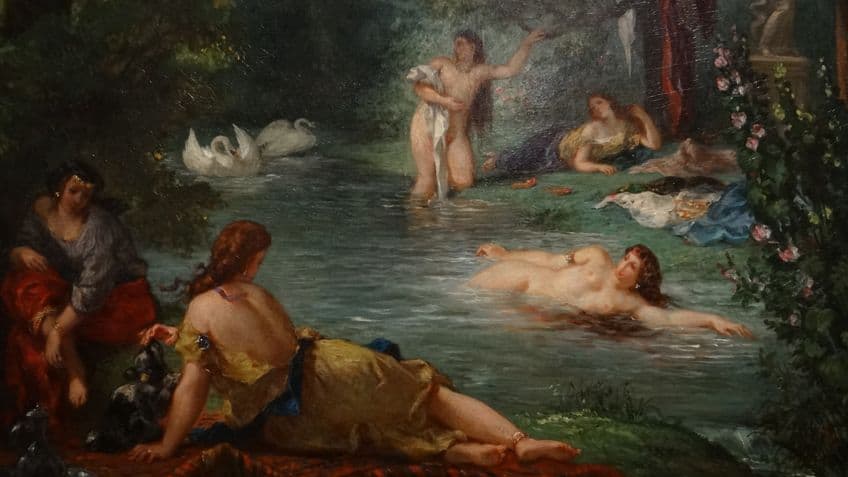
Domestic themes coexisted with depictions of travel in exotic locations throughout the Romantic period. When executed via the Romantic sub-genre of Orientalism, the emphasis on the nude female form appeared both enticing and forbidden. This exotic worship explains French painters’ love with the Far East, the Mediterranean area, and Northern Africa, as seen in the gorgeous Orientalist works of Eugène Delacroix, Jean-Léon Gérôme, and Jean Auguste Dominique Ingres. Orientalism would become an integral component of the work of these artists and others during the Romantic period.
Impressionism in French Art History
While the critics and public were slow to warm up to the modernists – Manet sparked outrage in 1865 when he displayed his masterpiece, Olympia – the Salon des Refusés heralded the start of a new era in French art history, with Paris quickly becoming the undisputed epicenter of the world of art. With the Academy standard’s iron grasp loosening, French painting evolved in ways that favored the use of vibrant colors and an emphasis on daily subject matter. En plein air painting, free of the constraints of the studio, became the standard for the Impressionists. Yet, works like Impression: Sunrise (1872) by Claude Monet received scathing criticism when they first appeared.
Many people thought the painting seemed incomplete because of the loose brushwork.
Monet, an innovator in the use of light, color, and mood, created mature works, such as his famous canvases of his own gardens at Giverny, that approached pure abstraction. Leaving aside the Academy’s formal portraits and big canvases, painters like Gustave Caillebotte and Pierre-Auguste Renoir focused on Parisian street life, while Camille Pissarro adopted Naturalist methods in his pictures of rural peasant life. In the early modern world of Parisian art, female painters acquired greater recognition as well.
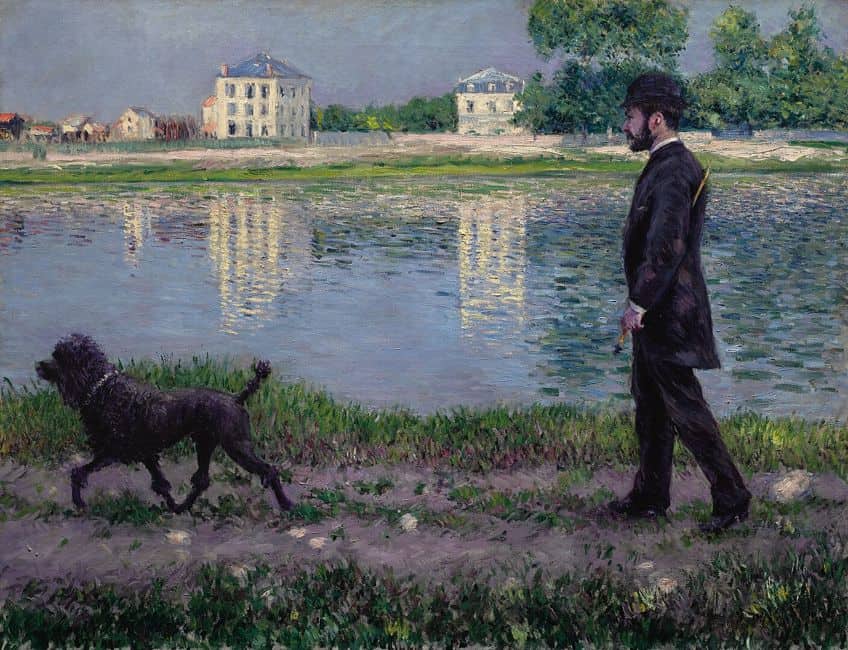
Eva Gonzalès, Marie Bracquemond, and Berthe Morisot were French Impressionist painters known for their paintings of intimate interior scenes. Morisot was certainly the most popular of this group, and she rose to become one of the movement’s most significant individuals. Morisot was recognized for her tenacity, and she typically explored the same subjects as her male peers. But she also utilized her sex to her advantage, gaining unrestricted access to many facets of feminine life that her male colleagues were denied.
Post-Impressionism Art in France
Post-Impressionism was a response to Impressionism and is most closely connected with Paul Gauguin, Paul Cézanne, Vincent van Gogh, and Georges Seurat. Despite their disparate approaches, the Post-Impressionists unanimously rejected the Impressionists’ fixation with reproducing naturalistic lighting and color effects in favor of a focus on structured color patterns and forms. The Post-Impressionists felt that artwork did not have to be a window into the real world, and they were among the first artists to embrace abstraction.
Cézanne, for his part, is widely regarded as being among the most influential painters in the formation of modern art, particularly among the Cubists and Fauves.
He displayed three works at the Impressionist exhibition in 1874, but it was with a series of still-life artwork from the mid-to-late 1870s that he started his now-famous experiments in which, rather than recreating effects of shadow and light, he started constructing his compositions through gradations in form and color. These works of art not only celebrated the lives of regular rural workers but also demonstrated Cézanne’s style of combining delicate color gradations to create the appearance of three-dimensionality.
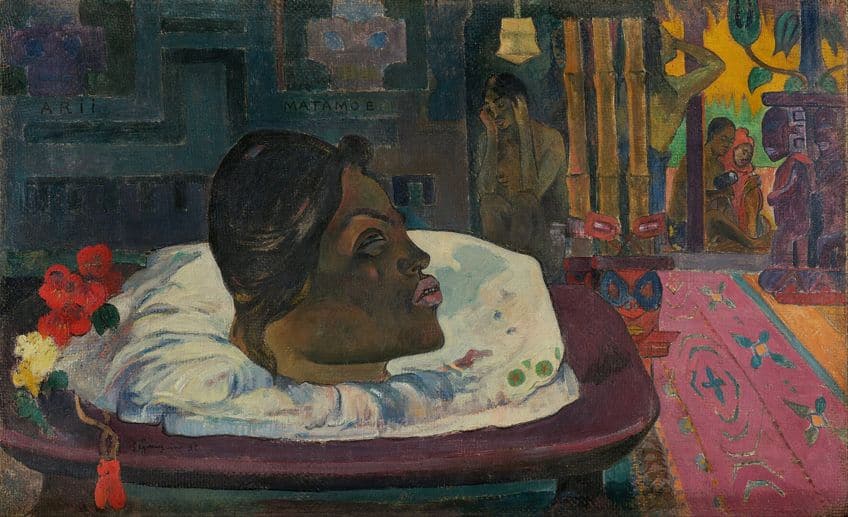
A less researched, more passionate, and spontaneous approach was also associated with Post-Impressionism. Paul Gauguin and Vincent Van Gogh are outstanding examples of this component of the movement. Van Gogh’s failing mental health and tragic end have become folklore; the image of the suffering artistic genius has infused van Gogh’s work with a psychological resonance unparalleled in art history. Van Gogh was so unstable that he and Gauguin engaged in violent arguments, with Gauguin even being threatened with a razor by van Gogh, eventually departing from France to the colony of Tahiti.
French Art Nouveau
Art Nouveau is defined as an ornamental style of design art that flourished in Europe and the United States between 1890 and 1910, including artwork, interior design, jewelry, typography, and poster design. The Art Nouveau style was known by many names in different nations, but it is credited to S. Bing, who called his gallery in Paris L’Art Nouveau. This movement’s proponents attempted to synthesize all of the arts in a concerted endeavor to produce art based on organic shapes that could potentially be mass-produced for a big audience. The twining-plant shape was adapted to the demands of painting, architecture, sculpture, and the decorative arts in the Art Nouveau style.
In France, Art Nouveau absorbed the asymmetrical lines favored by Toulouse-Lautrec and Gauguin, as well as the broader enthusiasm for the ornamental pattern effects of ukiyo-e prints and Japonism.
French Fauvism
Fauvism is one of several early modern art trends that began as an act of defiance against existing rules. Pioneered by the likes of André Derain and Henri Matisse and, Fauvism was primarily associated with French artists in its early years. Fauvist artwork is distinguished by its use of vibrant hues, textural brushwork, and non-naturalistic portrayals. Fauvist painters originated as an extension of the Impressionist painters produced at the turn of the 19th century in certain aspects. Unlike the Impressionists, though, the Fauvists paid special attention to conveying emotion in their works. The Fauvists regularly painted landscapes, portraits, and nudes, enhancing the hues of the natural world. Critics who initially saw the paintings used the term “Fauves” to characterize what they saw as the rudimentary color palette of painters like Derain and Matisse. Although meant as an insult, the Fauves completely embraced the name proudly.

French Primitivism
Many French art trends will overlap and change by the turn of the century. Primitivism was once a tendency that welcomed the impact of Oceanic and African civilizations rather than a defined movement. As a result, it may apply to artists such as Gauguin, the Fauves, and, subsequently, the Cubists. The term is quite complicated in contemporary art conversations, and many associate it with pejorative imperial overtones. Nonetheless, it is a style characterized by a real outsider, Henri Rousseau, a painter who never left France and whose works of art were openly denounced as “childlike” by many critics. Despite considerable critical disdain, he established a distinct niche in French modernism. Rousseau was most renowned for his colorful paintings of the forest, which were filled with plants and wildlife.
Outside of the establishment, Rousseau’s artwork garnered enthusiastic reception, and he was embraced by a younger generation of avant-garde writers and artists.
French Cubism
Cubism was the most important art development in the early years of the 20th century. It was created by two individuals, Pablo Picasso of Spain and Georges Braque of France. Taking influence from the multifaceted landscapes of Post-Impressionist Paul Cézanne as well as the African sculptures they saw in Paris’ ethnographic museums, Picasso and Braque retired to the studio and perfected the technique that became Analytic Cubism between 1908 and 1910.
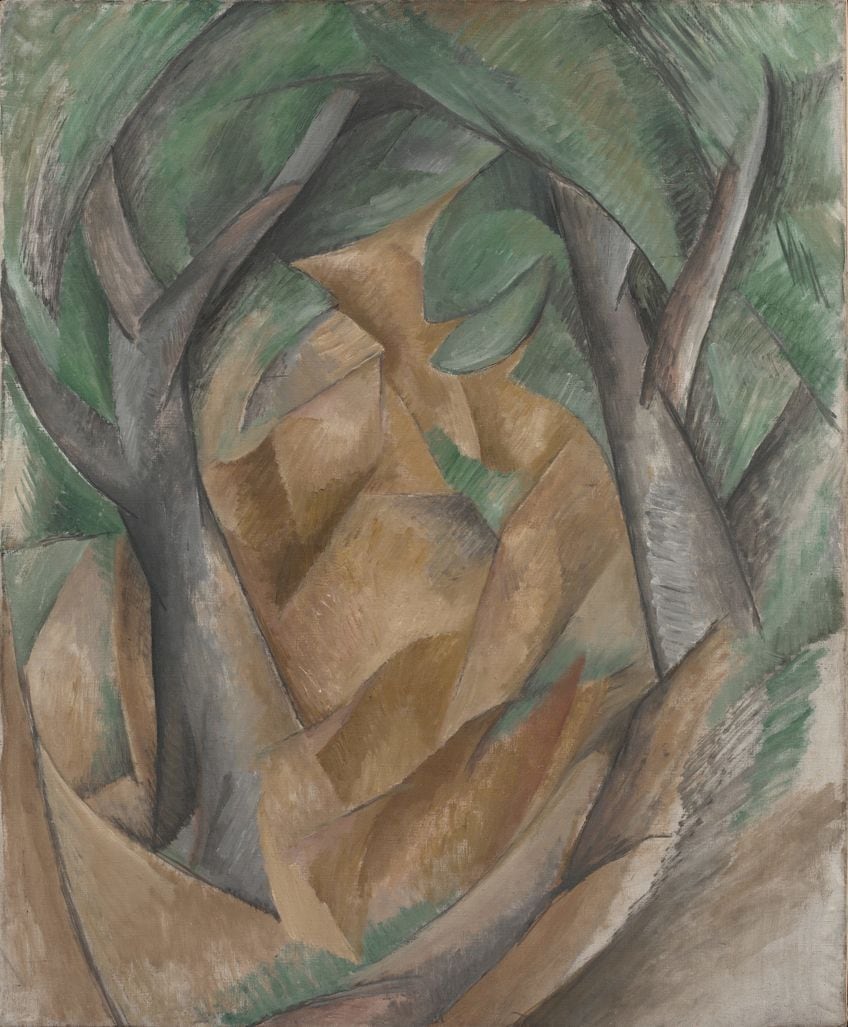
It denotes a style that split the subject into angular and multi-layered surfaces, bringing still lifes and portraits close to absolute abstraction. Both Braque and Picasso subsequently moved away from the multi-perspective approach in favor of flattened images that all but discarded their prior references to three-dimensional space via collage experiments employing printed patterns and newspaper print. Synthetic Cubism featured fewer geometric planes, a larger palette, and more representable subject matter, as well as a wide range of mixed media.
French Purism
Purism was a postwar development primarily connected with Swiss-French architect Le Corbusier and French artist Amédée Ozenfant. Purists argued that most artistic activities were entwined with bourgeois conceptions of beauty and that a genuinely progressive movement in art would rely on form simplicity and standardization. It was a policy intended to be appealing to future generations who valued mass production and the restoration of classical order in building, art, and design.
Purist artists, who included Jacques Lipchitz and Fernand Léger, aimed to imbue commonplace items with a timeless character in order to reduce them to aesthetically appropriate forms and shapes that emphasized the basic beauty of the modern world.
French Surrealism
Surrealism was an anti-establishment movement that emphasized the illogical and spontaneous aspects of art. Breton characterized Surrealism in his manifesto as psychic automatism in its purest form, in which one attempts to represent – vocally, in writing, or in any other way – the true process of thought. Surrealism was an art genre that rejected reason and logic in favor of certain strange practices such as automatism. Surrealism was a quest to delve into the unconscious human mind, which, according to the theories of Sigmund Freud, was the storehouse of inner truth and could only be accessible via one’s dreams. Surrealism is possibly the most cosmopolitan period in French art history and profoundly impacted the entire worldview of the Parisian avant-garde.
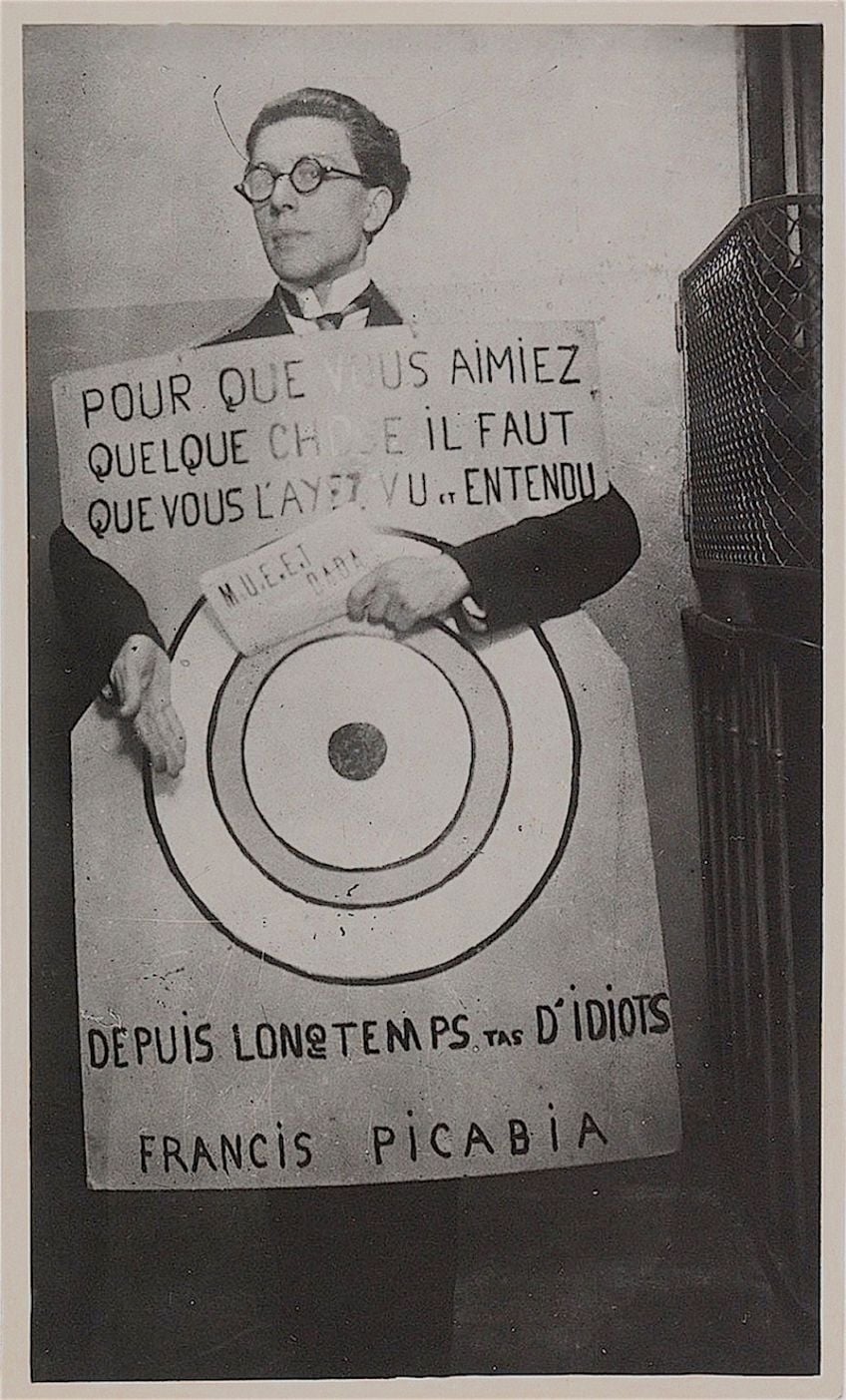
French Art Informel
By the conclusion of WWII, the international art scene had moved from Paris to New York. Nonetheless, French painters made substantial contributions to the realm of mid-to-late 20th-century art. Art in France had begun to move towards its own, less forceful version of Abstract Expressionism, dubbed Art Informel. By the mid-1950s, this transformation had been completed, and painters like Georges Mathieuwere and Pierre Soulages were in high demand. The term Art Informel was created by Michel Tapié, the French art critic, who said it was “much rarer” than a movement, including an international collection of true individuals unified in their requests for peace and compassion.
Whereas Soulages used a predominantly dark color palette to produce vast paintings with thick splashes of color, Mathieu developed a distinctively French type of abstraction called Lyrical Abstraction, which emphasizes color and the rapidity with which paint can be applied to the canvas.
French Art Deco
The early 20th-century urge to produce “modern” design – items appropriate for a fast-paced industrialized society – resulted in the development of various expressions, all of which fell under the umbrella of Art Deco, but nowhere did this trend emerge with greater unity than in France. The style moderne, as it became known in France throughout its growth in the 1910s and 1920s, reached its highest point in the summer of 1925 during the stunning Exposition Internationale in Paris. The simultaneous expression of modernism and national historical precedence, as well as the union of art and workmanship, define French Art Deco.

The first feature demonstrates not just an object’s adaptability to modern living, but also its unique French character through its connection to the past. The second exhibits not just the technical ability – whether represented by a handcrafted or machine-made product – but also the artist’s aesthetic vision. These two features, by definition, precluded industrial fabrication. Because restricted or one-of-a-kind manufacture was more expensive than mass production, French Art Deco was clearly aimed at an elite market. Such customers valued the characteristics that made their products as exquisite, unique, and valuable as any masterwork from a bygone era.
Connoisseurship was crucial to French Art Deco, and it may be considered a third characteristic of this trend.
Many of the aesthetics proposed by avant-garde artists and sculptors were also widely accepted by the general public during this time period, particularly when applied to luxury products. Fauvism and Cubism were influential in shaping the development of the Art Deco style. The clashing patterns and colors of André Derain and Henri Matisse’s Fauvist artworks from 1905 to 1907 influenced wallpaper and textile designs, as well as the ornamentation of painted ceramics. Cubism’s geometric stylizations and abstract shapes were adapted to structural forms and surface decorations by Georges Braque and Pablo Picasso around 1907.
French Contemporary Art
In the new millennium artists in France created works that explored many topics in a single work of art, such as gender, identity, uncommon materials, text, performance, conceptualism, and so on. Artists like Louise Bourgeois and Bettina Rheims create works that address issues of gender and femininity on both a universal and personal level, whereas artists such as Pierre Huyghe use video pieces and large-scale installations to make statements about the wider society in which he dwells and the place of humans in that society. The traditional motif of the sculptural figure has also been modernized in contemporary advancements in French art.
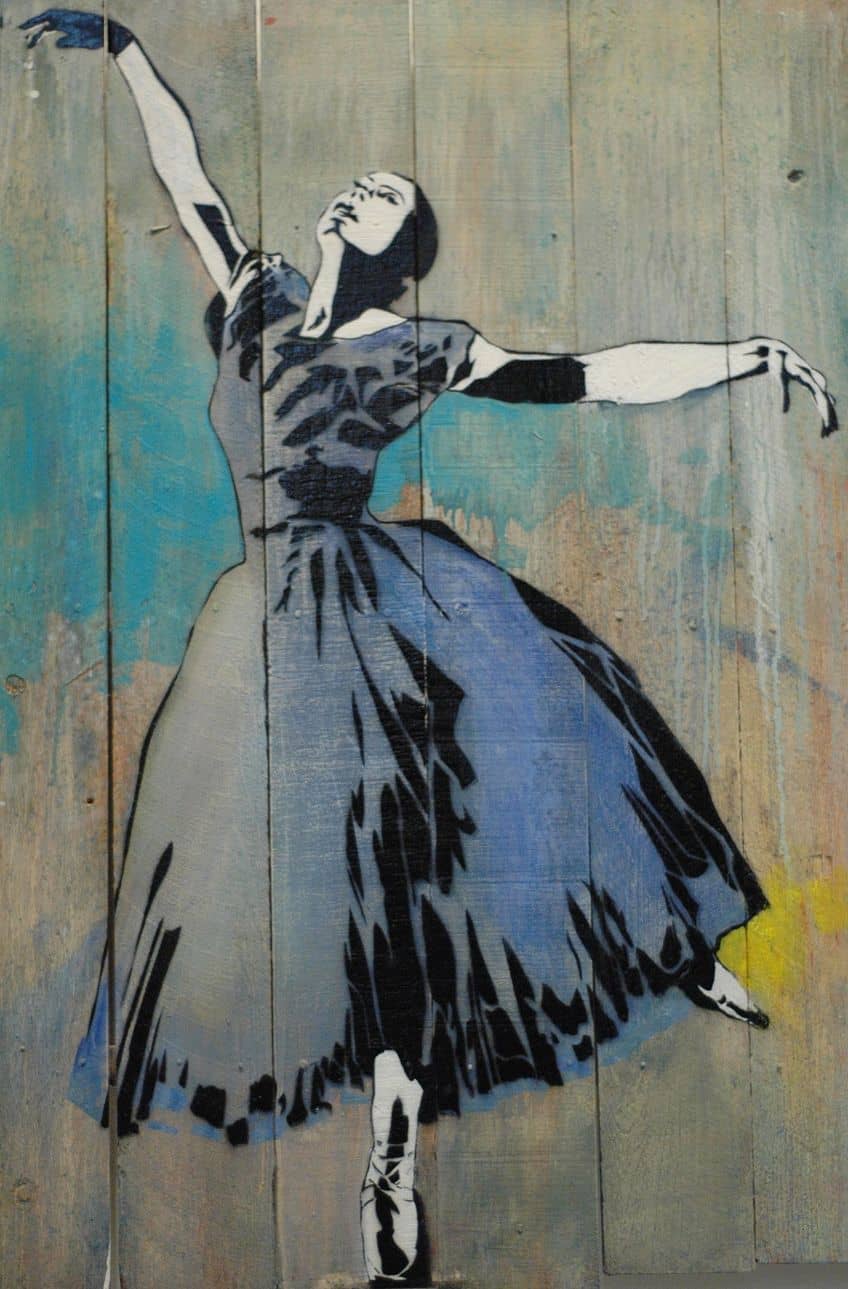
Since the 19th century, French sculptors have helped to define what contemporary sculpture should look like, from Rodin’s more humanized and reflecting masculine forms to Gaston Lachaise’s rethinking of the modern female form. It’s a heritage that lives on in the work of Xavier Veilhan and Niki de Saint Phalle, whose figures are both larger in scale and more intellectually oriented than their early modernist predecessors. Additionally, there is a rebellious spirit of artmaking among French artists today, echoing the early modernists’ risk-taking.
Graffiti artists like Blek le Rat, Jef Aérosol, and JR have pushed their Street Art into the broader contemporary art scene, often employing their works of art to make significant political and social comments about the world around them.
French Art in the Global Context
Impressionism, one of the most significant art trends in history, started in France in the late 19th century. Despite initial opposition, Impressionism eventually achieved global recognition and had a significant influence on future art movements. Then came Post-Impressionism, influencing new generations of artists worldwide. Cubism revolutionized the way that artists depicted subjects by breaking down forms into geometric shapes and multiple perspectives. This movement challenged established conceptions of representation and had a significant impact on the development of contemporary art across the world.
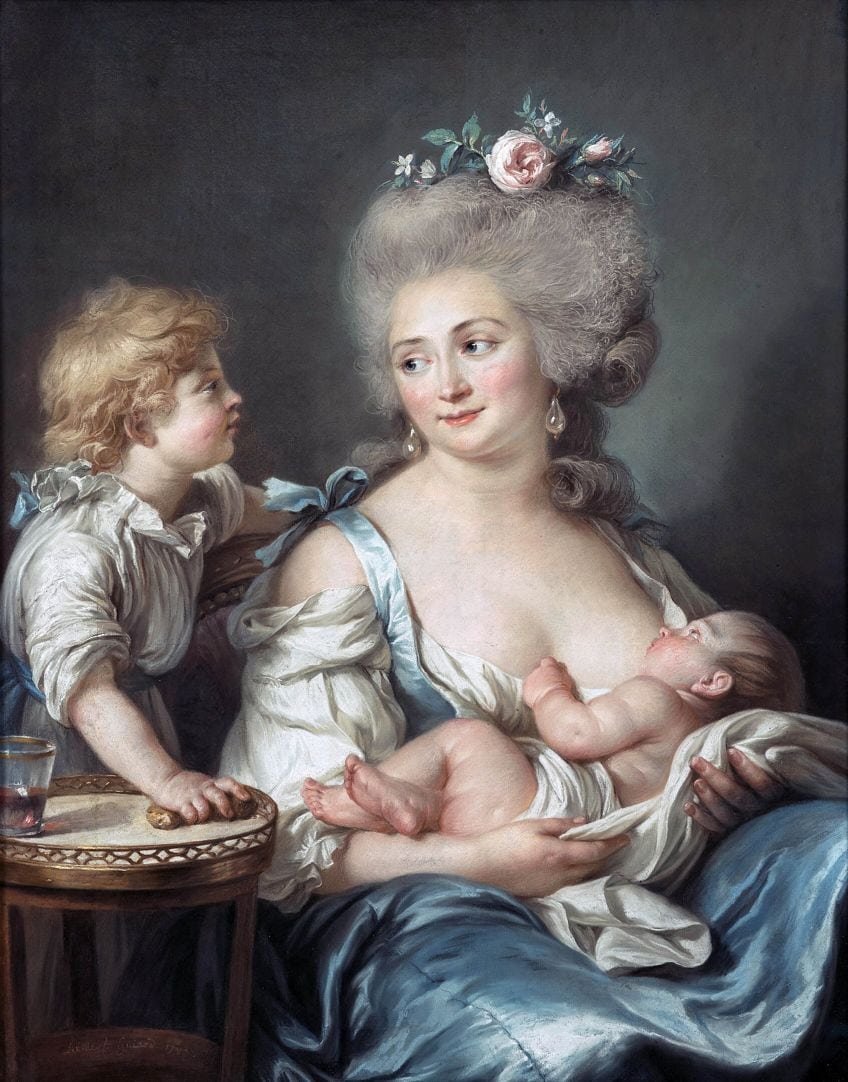
The departure from the realistic color schemes of Fauvism, as well as its focus on emotions and intuition, lay the foundation for future art trends and influenced artists from all over the world. Surrealism studied the unconscious mind, influencing art throughout the world while remaining a prominent artistic force for decades. French art continues to have an impact on art in the modern world. France continues to be a center for modern galleries, artists, and institutions, encouraging originality and innovation in a variety of art mediums. French artists and curators also regularly participate in international art fairs and exhibits, adding to the art world’s continuous global discourse.
As we have discovered today, French art has a long and rich history, and has left an incredibly significant mark on the global art scene through the centuries. French art history is the story of innovation and the development of new and unique concepts and movements. Many of the most important art movements of the last few centuries have originated from art in France. French art culture has given rise to numerous famous artists, sculptors, architects, and designers who not only paved the way in their own country, but often throughout the world. From the Renaissance era in French art, through to the most contemporary and groundbreaking styles, the French have also had a knack for creating movements that set the standard for the rest of the world to follow.
Frequently Asked Questions
Why Is French Art Regarded As Significant in the Art World?
France has a centuries-long artistic tradition that is lauded worldwide. Artists from France made significant contributions to the advancement of art throughout the Renaissance, and Paris became a cultural center that attracted artists from all over Europe. This historical legacy paved the way for France’s continuous dominance in the art world. France has fostered an array of innovative art movements that have defied conventional standards and pushed beyond the limits of creative expression. French art movements such as Impressionism, Cubism, Fauvism, and Surrealism emerged and made an indelible mark on the global art scene, thereby helping to determine the course of modern and contemporary art.
What Defines French Art Culture?
France is home to a number of the world’s most prominent art institutions, including the Musée d’Orsay, the Louvre Museum, and the Centre Pompidou. Paris, in particular, has long been regarded as the world’s cultural center. It drew artists, authors, and philosophers from all over the world, resulting in an eclectic mix of creativity and perspectives. The city’s strong cultural climate promoted artistic exchanges and partnerships, establishing it as an important center for artistic growth. French art has also contributed much to theories of art and critique. French intellectuals have been at the forefront of defining art discourse, analyzing art trends, and advocating novel theories about aesthetics in art.
Isabella studied at the University of Cape Town in South Africa and graduated with a Bachelor of Arts majoring in English Literature & Language and Psychology. Throughout her undergraduate years, she took Art History as an additional subject and absolutely loved it. Building on from her art history knowledge that began in high school, art has always been a particular area of fascination for her. From learning about artworks previously unknown to her, or sharpening her existing understanding of specific works, the ability to continue learning within this interesting sphere excites her greatly.
Her focal points of interest in art history encompass profiling specific artists and art movements, as it is these areas where she is able to really dig deep into the rich narrative of the art world. Additionally, she particularly enjoys exploring the different artistic styles of the 20th century, as well as the important impact that female artists have had on the development of art history.
Learn more about Isabella Meyer and the Art in Context Team.
Cite this Article
Isabella, Meyer, “French Art – A Deep Dive into the Art and Culture of France.” Art in Context. August 28, 2023. URL: https://artincontext.org/french-art/
Meyer, I. (2023, 28 August). French Art – A Deep Dive into the Art and Culture of France. Art in Context. https://artincontext.org/french-art/
Meyer, Isabella. “French Art – A Deep Dive into the Art and Culture of France.” Art in Context, August 28, 2023. https://artincontext.org/french-art/.





